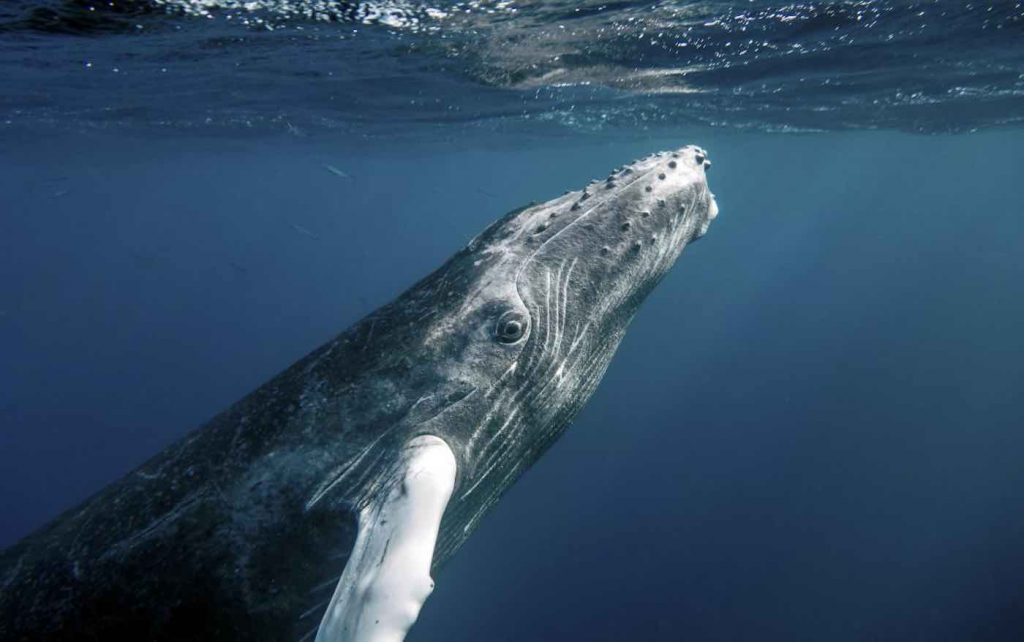 Photo by Christopher Michel, CC license
Photo by Christopher Michel, CC licenseIn a world first, marine biologists were able to have a discourse with a humpback whale, pushing out the boundaries of cooperation and understanding that could be possible between our two species.
An adult female humpback whale, known as Twain, in Southeast Alaska, was located along with a group of whales and called with a recording of another humpback’s “whup/throp” call.
The recording was made by whales of the same group the day before, but the team didn’t know if the calls recorded were made by the same whale or were part of an exchange between two or more whales. To find out, the researchers conducted the trial on two days, with the first to find out if the whup calls they had recorded would be socially acceptable.
It turned out that whatever the whale(s) had been saying the day before was appropriate as far as Twain was concerned, and after the team broadcast the playback, she drifted away from her group and participated both physically and acoustically in three phases of interaction with the crew and their boat including periods of engagement, agitation, and disengagement.
First she called back, then she circled the boat three times, surfaced, and dived again. After this interaction, she gradually left.
Twain’s whup calls on day 2 and the whup calls recorded on day 1 were acoustically analyzed for both spectral and temporal features, specifically the inter-call interval, or latency between calls as measured by the time difference between the preceding call’s offset and the subsequent call’s onset.
The scientists determined that this metric would be able to determine both arousal and valence, thereby allowing them to get some idea of the emotional content of the exchange. The results indicated that substantial variation was found among the latencies in Twain’s calling behavior, which they took to mean excitement or arousal.
“After playing the contact call three times, we got this huge response,” said Brenda McCowan told the BBC. “Then, to keep the animal engaged, I started trying to match the latency of her calls to our calls. So, if she waited 10 seconds, I waited 10 seconds. We ended up matching each other. We did this 36 times over a 20-minute period.”
Twain’s calls were significantly shorter during engagement than either during the period defined as agitation, when she was circling the boat ejecting air through her blowhole, or as she was leaving.
The BBC reports that the songs of the humpback whale are thought to be among the most complex in the animal kingdom.A strong point of the whole experiment was that the results were determined with a degree of blinding—via independent, uninformed observers reporting on surface behavior and respiratory activity of the interacting whale.In World First, Scientists Share What Was Almost Certainly a Conversation with a Humpback Whale
2024-04-16T10:49:00+05:30
